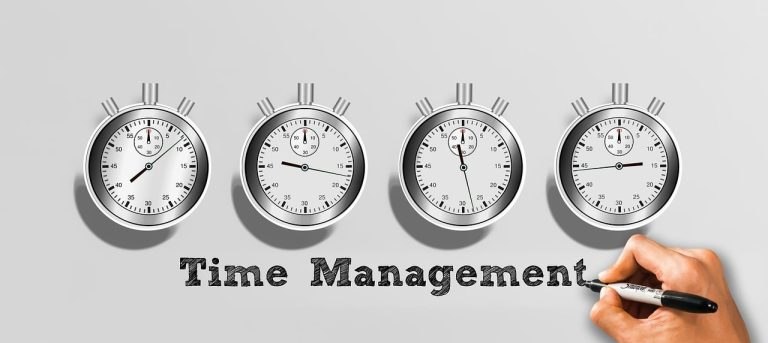Absence from work has always been a meaningful topic—for both employers and employees. High absence rates can signal problems like poor morale, dissatisfaction, or health issues. Low absence, on the other hand, often reflects reliability, a strong sense of responsibility, and engagement. But in today’s world of hybrid schedules and remote workplaces, we need a more nuanced perspective. How do we balance accountability, well-being, and modern ways of working?
Work Ethic as a Foundation
Work ethic, for me, has always been a core value—about how we show up and take responsibility in a professional setting. I’ve made it a point to plan ahead to minimize the impact of any absence on colleagues and the company. That means using personal days or time off for private errands like doctor’s appointments, so work hours stay focused on work.
Whenever I’ve taken on projects that require extra effort and time, I’ve always ensured that other responsibilities are clearly organized and easy for others to handle in my absence. It’s not just about being physically present—it’s about providing continuity and stability. That kind of mindset builds trust and creates a workplace that runs smoothly. My goal has always been to work in a way that makes me replaceable—because when my absence goes unnoticed, I know I’ve done a good job.
Still, I’ve had to learn the hard way that work ethic must be balanced with health. Ignoring the body’s signals can have serious consequences—and I know that firsthand.
Personal Experience: When Responsibility Meets Reality
One example that shaped my thinking was after a paragliding accident where I broke my back. I was officially on sick leave for three weeks—two of those spent in the hospital, completely unable to work. As soon as I was discharged, I did everything I could to return to work.
Against my doctor’s advice, I resumed work at 60% capacity just three weeks after the injury—but it was too soon. I had to cut back to 40% the following week before slowly working my way back up to full time.
That period wasn’t without complications. Due to incorrect medication, I was rushed to the hospital one day after ignoring the warning signs for too long. Ironically, my regular doctor didn’t think it was serious enough to give me an emergency appointment since I had still managed to show up at work. Thankfully, a colleague insisted I go to the ER. The hospital staff later told me that if I had waited until the next day, I might not have survived. Even so, I discharged myself after two days and returned to work as usual.
These experiences taught me the theory of listening to my body—but in practice, I still tend to put myself last. I’ve often prioritized the company’s needs over my own well-being, even when it may not have been in anyone’s best interest. That self-awareness has given me an important insight: loyalty and responsibility are invaluable traits—but they must be balanced with self-care if they’re to be sustainable in the long run.
Remote Work: A New Perspective on Absence
Much like I’ve had to learn to balance responsibility and health after my accident, remote work has changed how we think about both productivity and sick days. It allows people to keep working through mild illness and reduces the need for formal sick leave. But it also blurs the line between work and rest.
Benefits of Remote Work:
- Reduced risk of spreading illness – Employees can contribute without exposing coworkers to contagion.
- Increased flexibility – Easier to combine work with personal responsibilities.
- Better self-care – Many feel they can better tend to their physical and mental health.
Challenges of Remote Work:
- Lower threshold for “feeling unwell” – At home, it’s easier to feel too unwell to work. Ironically, staying passive may worsen mild symptoms, while engaging in work can sometimes be energizing.
- Blurred boundaries – Harder to separate rest from work.
- Less social interaction – A lack of workplace community can affect morale.
Personally, remote work has been a valuable option, though one I rarely use. I find I’m more focused and productive in the office. Even during COVID-19, while others stayed home, I went to the office daily to maintain structure and effectiveness.
Still, I’ve appreciated having the option. It’s not just about convenience—it’s about having the freedom to shape my workday in ways that help me do my best. Balancing flexibility with responsibility is something I’ve always been mindful of.
It’s important to recognize, though, that remote work isn’t a possibility for everyone. Healthcare workers, teachers, tradespeople, retail staff, and drivers are just a few examples of roles that require physical presence. These jobs are essential to society and remind us that one size does not fit all when it comes to the workplace.
For those of us who do have the option to work remotely, we should use it with gratitude—and be mindful that this flexibility isn’t universal.

A Low Absence Threshold: A New Workplace Challenge
With greater flexibility has come a lower threshold for absence. Some people take personal errands during work hours, or choose to stay home for minor ailments. This can feel unfair to colleagues who always show up, and it risks creating tension in the workplace.
At the same time, we must remember that everyone’s health and capacity varies. Employers need to foster a culture that combines clear expectations with empathy and support.
Responsibility, Health, and Balance
Low absenteeism isn’t just about showing up—it’s about planning ahead, owning your role, and contributing to a healthy work environment. It also means knowing when to rest, so we can keep showing up over time. Remote work and flexible arrangements open new doors—but they also present new pitfalls. As employees, we must use them wisely. As employers, we must help create the right balance.
A Holistic Approach to Absence
Absence is part of working life. But how we handle it defines us as professionals and colleagues. By reflecting on our choices—and how they affect ourselves and others—we help create a workplace where both health and responsibility matter.
Balancing showing up with taking care of ourselves is the key to sustainable, meaningful work—for all of us.
Mental Health and Prevention
As mental health conditions become one of the leading causes of long-term sick leave globally, it’s more important than ever to ask how we can create workplaces that prevent burnout and promote well-being. The workplace isn’t just a place for productivity—it’s also a place for connection, support, and growth.
For employees, this means knowing our limits, listening to our bodies, and resting when needed. For leaders, it means creating a culture where mental health is not taboo—and where flexible options like remote work or phased returns after illness are not only accepted but encouraged.
Preventing burnout starts with awareness. We need to ask ourselves: How can we help build an environment that supports both individual well-being and organizational sustainability? How do we create a culture where responsibility and self-care go hand in hand?
These reflections don’t just benefit individuals—they strengthen the workplace as a whole. By investing in mental health and work-life balance, we can reduce absence, increase morale, and build organizations where people can perform—and thrive—for the long haul.
👉 For a deeper dive into this topic, see my article How to Prevent Burnout at Work for practical strategies to support mental health in the workplace.





